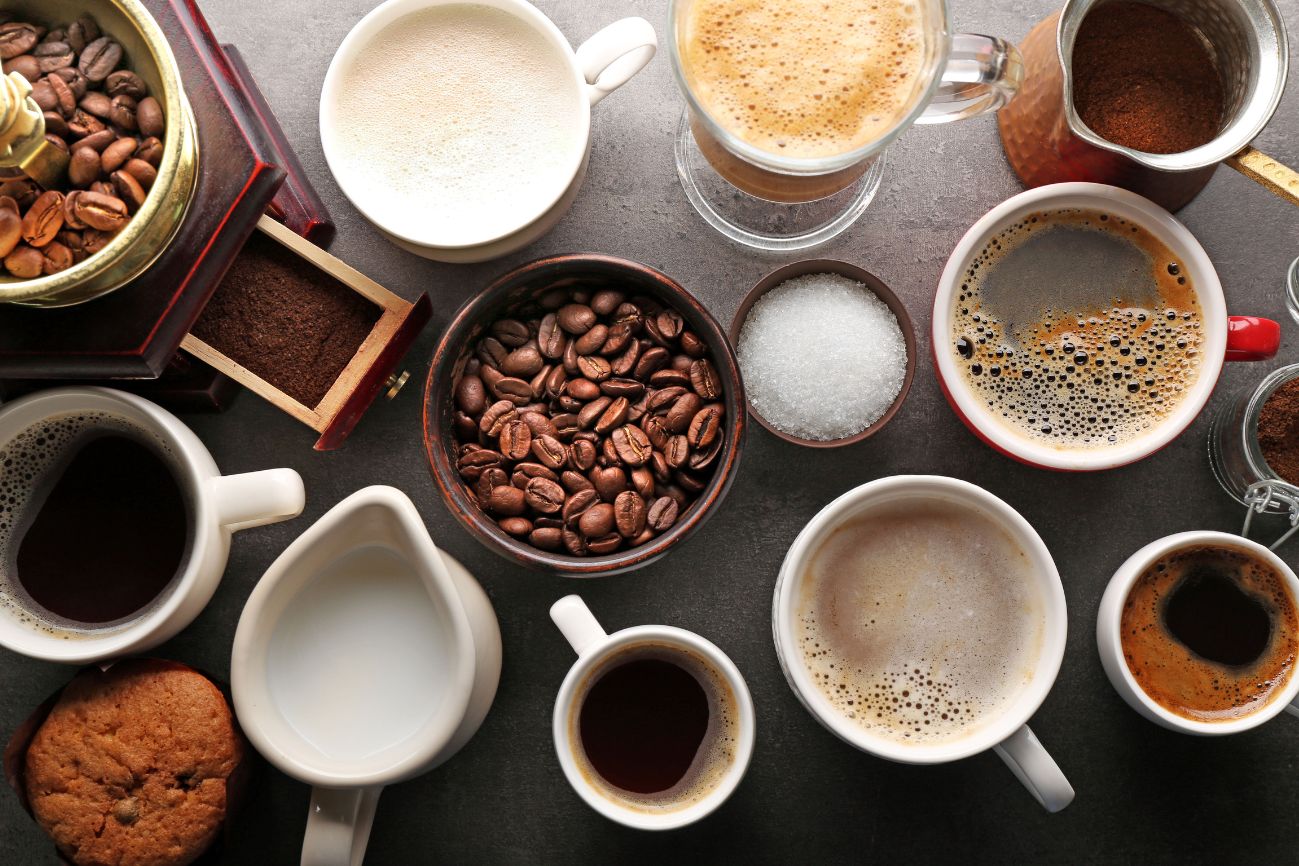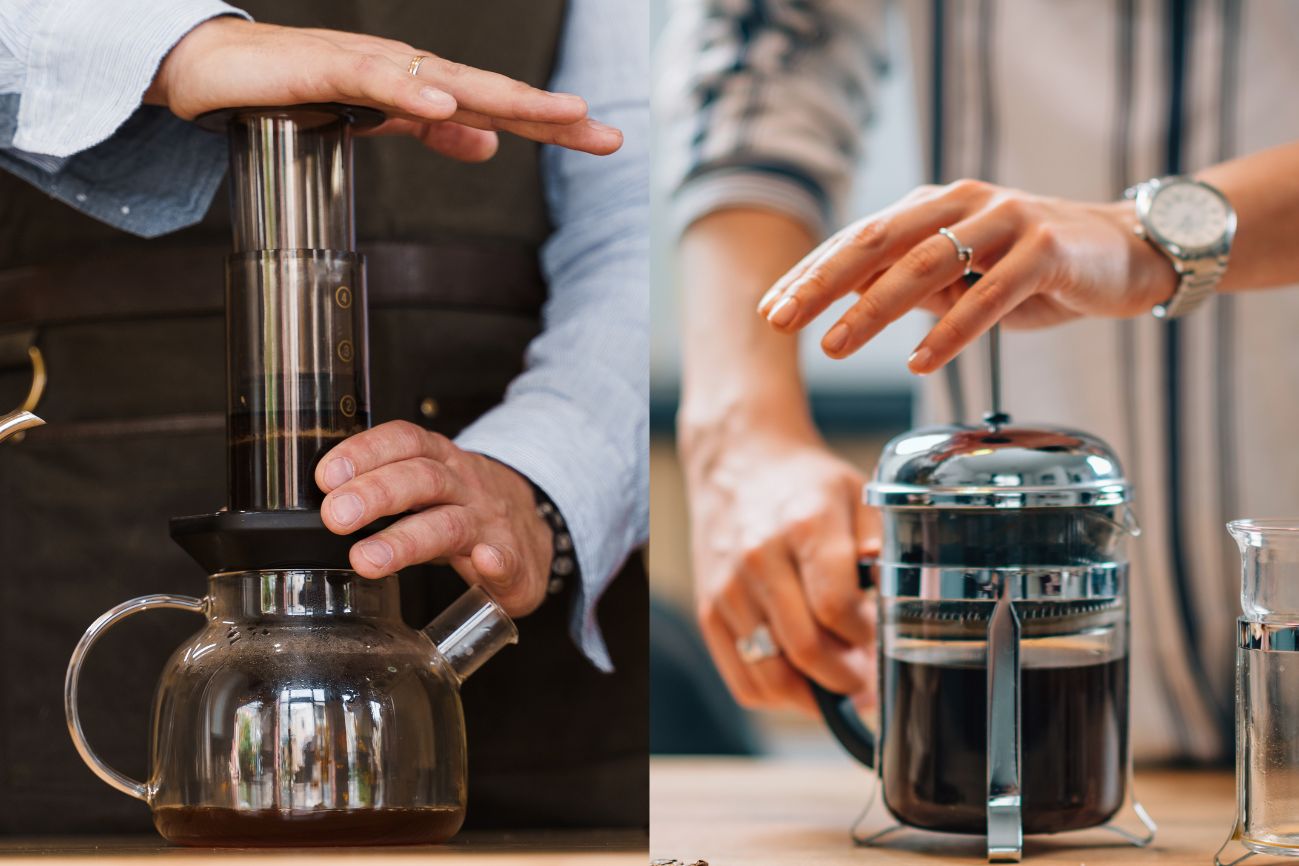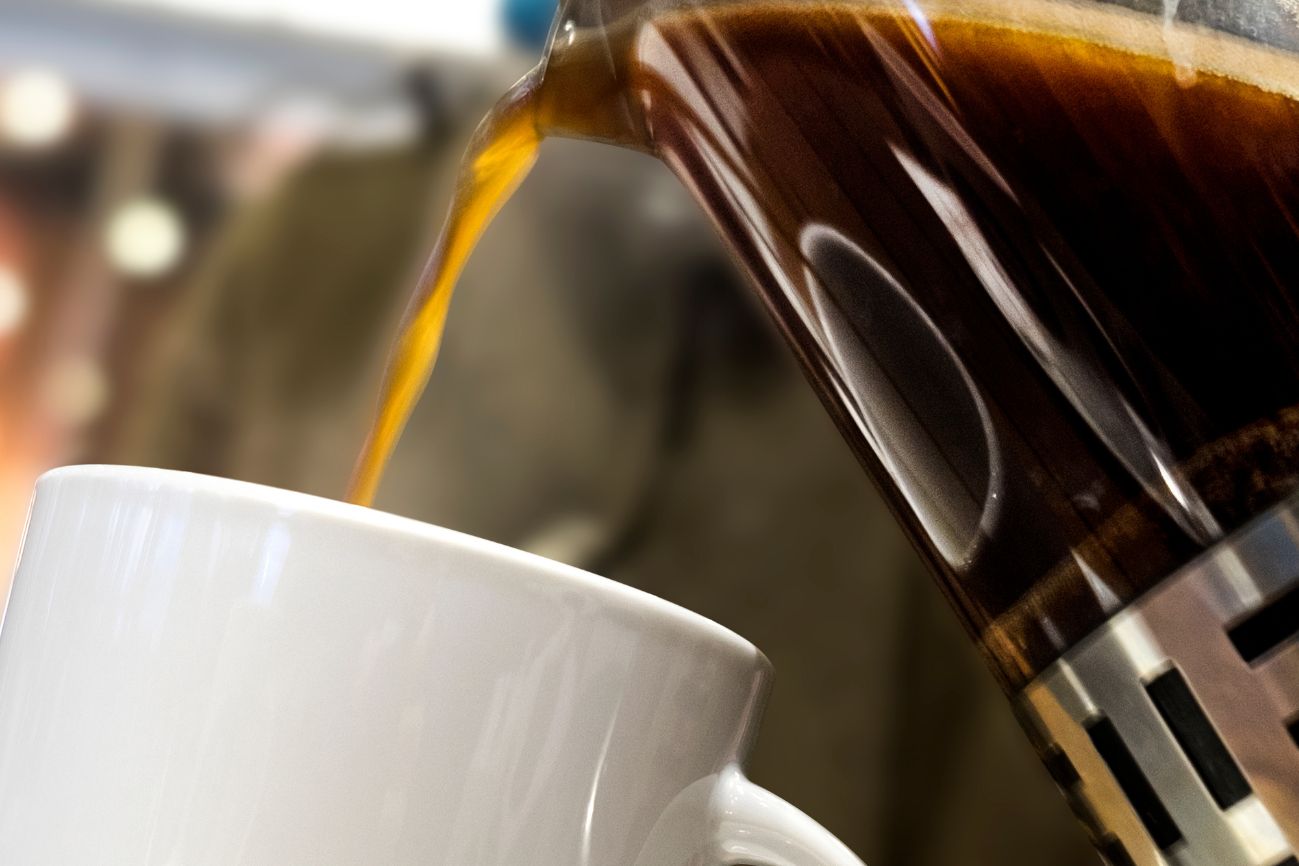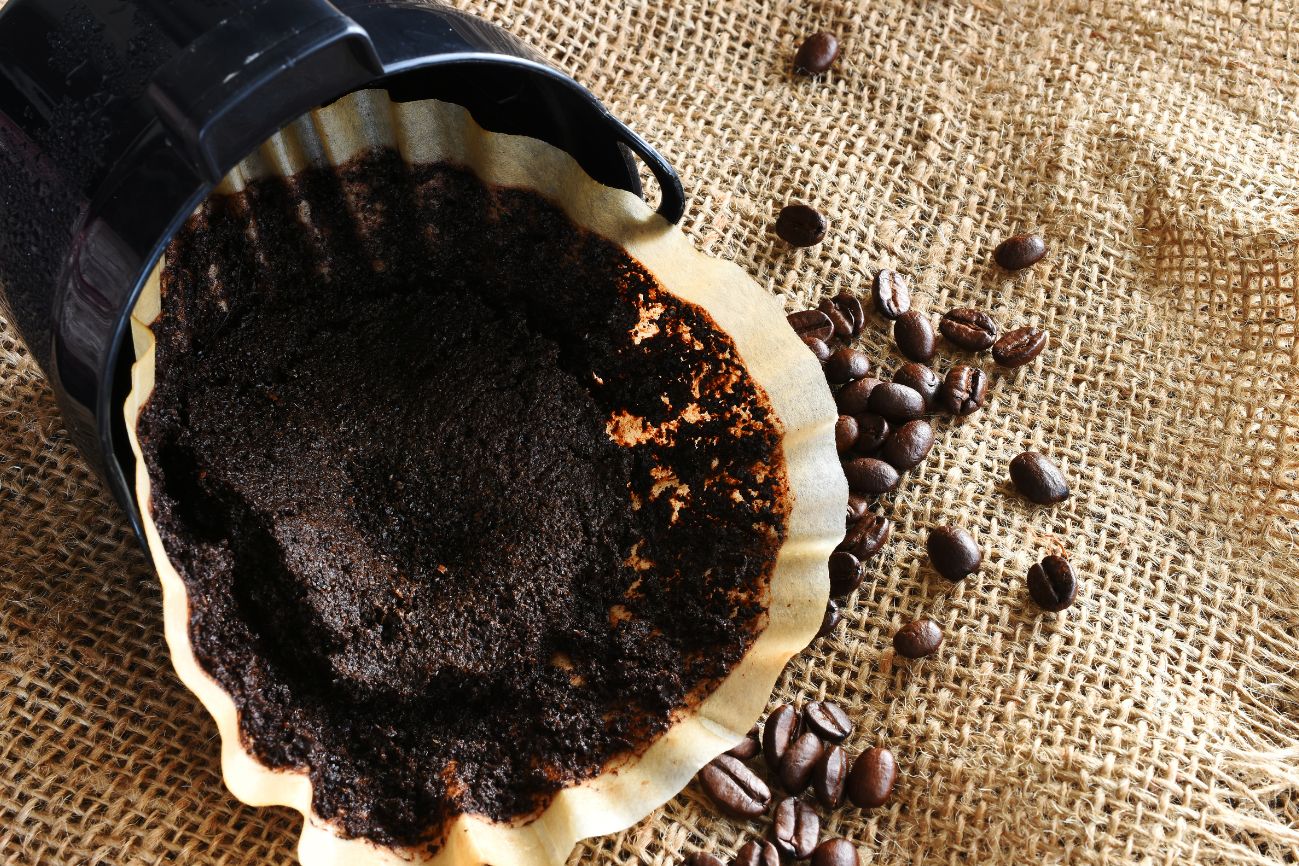For many coffee lovers, espresso is their first choice due to its strong, rich, and bold flavor and aroma. However, some people may find it expensive to make espresso. Espresso makers are very costly and heavy. They’re out of reach for everyone. Additionally, some people don’t know how to use them correctly to achieve the best espresso flavor. Therefore, we have a solution to all of your problems.
Today, we’re talking about espresso without machine. We will discuss some alternative brewing methods here. We’ll go over all of your concerns, including how to make espresso without machine, Moka pot espresso, AeroPress espresso recipe, and Alternative brewing methods.
So let’s get started!
1. Moka Pot: Stovetop Espresso
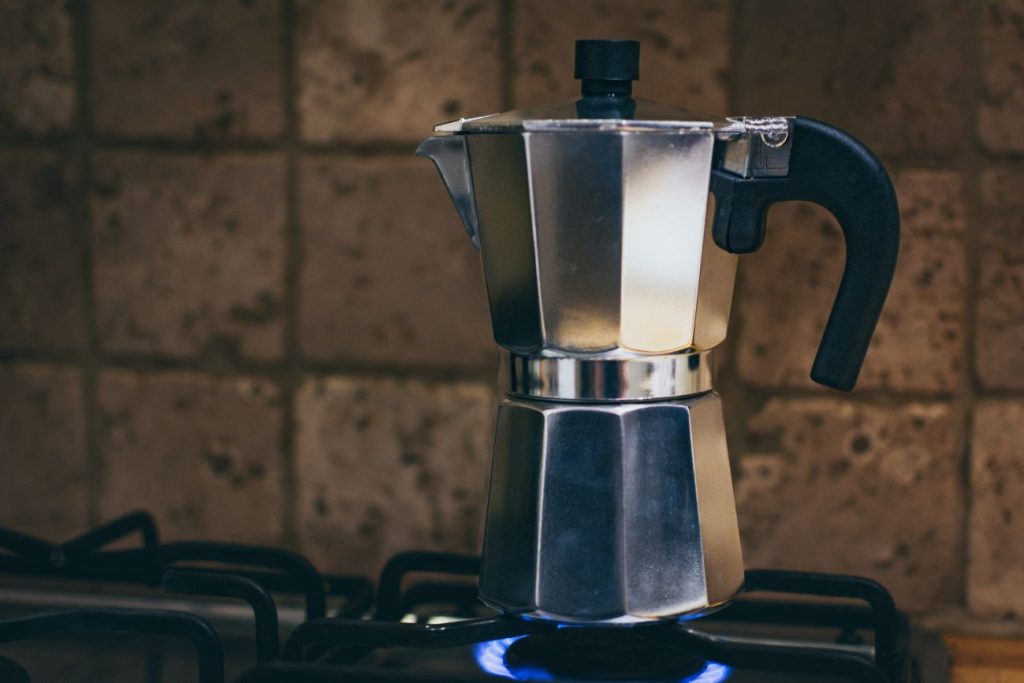
The Moka Pot like Bialetti, also known as a stovetop espresso maker uses steam pressure to bring out the full, strong notes of coffee. Despite being incredibly helpful, this coffee maker is the most underrated. With a few easy steps, you can make espresso at home without spending a lot of money on large espresso makers. This is the greatest substitute for espresso makers.
What You Will Need?
- A Moka pot
- A little bit coarser ground coffee
- Water
How to Brew Espresso-Style Coffee with a Moka Pot
- Unscrew the bottom chamber and fill it with warm water up to the safety valve.
- After that, fill the filter basket with the coarsely ground coffee and level it off without packing it too tightly.
- Now place the filter basket in the bottom chamber and screw the bottom chamber nicely and tight.
- Now put the moka pot over the gas burner on medium heat. The water will start to evaporate.
- The pressure will build up and push the water to the top chamber, passing the coffee grounds.
- Listen and wait! As soon as you start to hear a gurgling sound, then you need to cool it down.
- Turn off the stove, and just run it over your cold tap water; it will get rid of the steam, and the brewing process will stop.
- Now serve and enjoy!
Why Use a Moka Pot?
The Moka Pot uses pressure to extract coffee, mimicking the espresso-making process. While it doesn’t produce true crema, the result is a strong, rich coffee that’s perfect for espresso-based drinks.
For more about Moka Pot, read our article about A Beginner’s Guide to Moka Pot Coffee: Bold Coffee Made Easy
Pro Tips
- Clean your Moka Pot thoroughly after each use to avoid bitter flavors.
- Use finely-ground coffee, but not as fine as espresso grind.
- Don’t over-tighten the Moka Pot; it needs a bit of space for steam to build.
Before buy a Moka Pot, read this – The Best Moka Pots for Every Budget and Coffee Lover: Top 4 Picks for 2025
2. AeroPress: Versatile and Portable
The Aeropress is a compact and portable espresso maker, perfect for making espresso without machine. This is the greatest and most affordable alternative for costly espresso makers. The aeropress is specifically made for travel. It’s easy to put in your bag and take with you on road trips, mountain hikes, and forest adventures. It is portable due to its small size, low weight, and without the need for electricity.
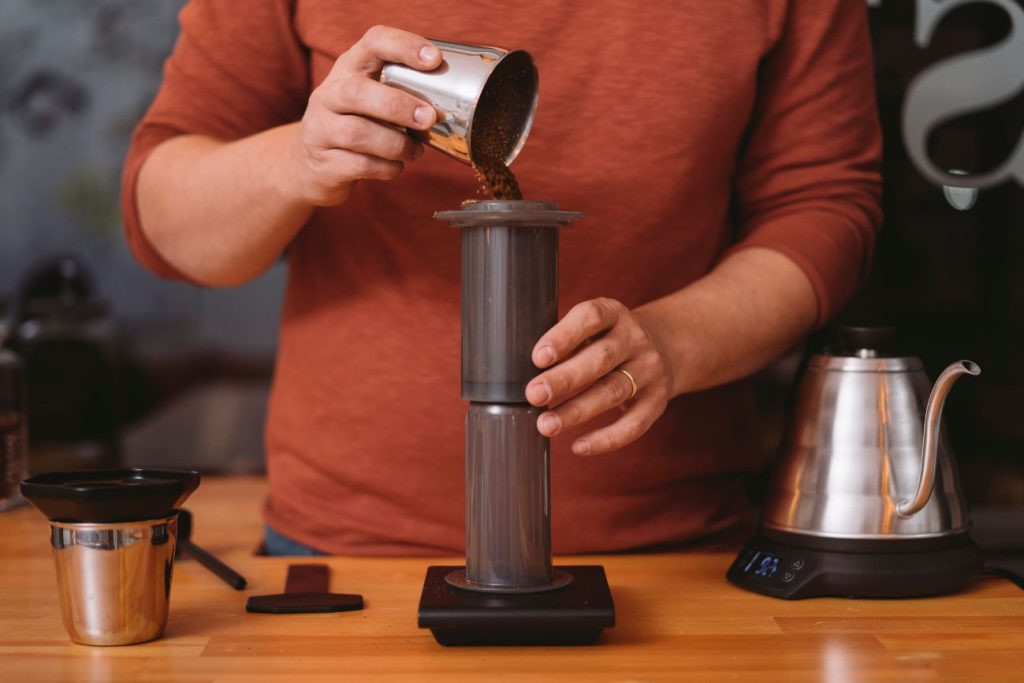
The Aeropress makes the most delicious and flavorful cup of coffee with a minimum effort by forcing hot water through coffee grinds.
How to Use an AeroPress for Travel: The Ultimate Brewing Guide for Travelers and Campers
What You Will Need?
- An AeroPress
- A little coarser grind than espresso coffee (18grams)
- 125 grams of hot water (around 85°C to 90°C or 185°F to 194°F)
- A sturdy mug
How to Brew Espresso-Style Coffee with an AeroPress
- First of all, insert a paper filter into the cap, rinse it with hot water, and attach the cap to the AeroPress.
- Place the AeroPress on your mug and then add 18 grams of little coarsely ground coffee.
- Now pour 30 grams of hot water on the coffee grounds and stir it with a spoon to make sure that the coffee grounds are evenly saturated.
- Now wait for 15 seconds to let it bloom a little bit.
- Add the rest of the hot water as quickly as possible.
- Insert the plunger and pull it up a little bit.
- Now let it sit for a minute and a half.
- Press down the plunger slowly but firmly until you hear a hissing sound.
- Now enjoy the rich and flavorful brewed cup of espresso without machine.
Why Use an AeroPress?
The AeroPress uses manual pressure to extract coffee, creating a concentrated brew that’s similar to espresso. You can adjust the grind size, water temperature, and brewing time to fine-tune the flavor.
Pro Tips
- Try the inverted method for more control over the brewing process.
- Use a fine grind, but not as fine as espresso grind.
- Experiment with brewing time and pressure to achieve your desired strength.
3. French Press: Full-Bodied and Rich Coffee
While the French press is used for making regular coffee, we can also use it to make espresso without machine. The French press is a large carafe with a pushable metal filter. We force the water through the coffee grinds using this metal filter. The majority of people love the French press because it allows them to control the water temperature and brew duration to suit their preferences.
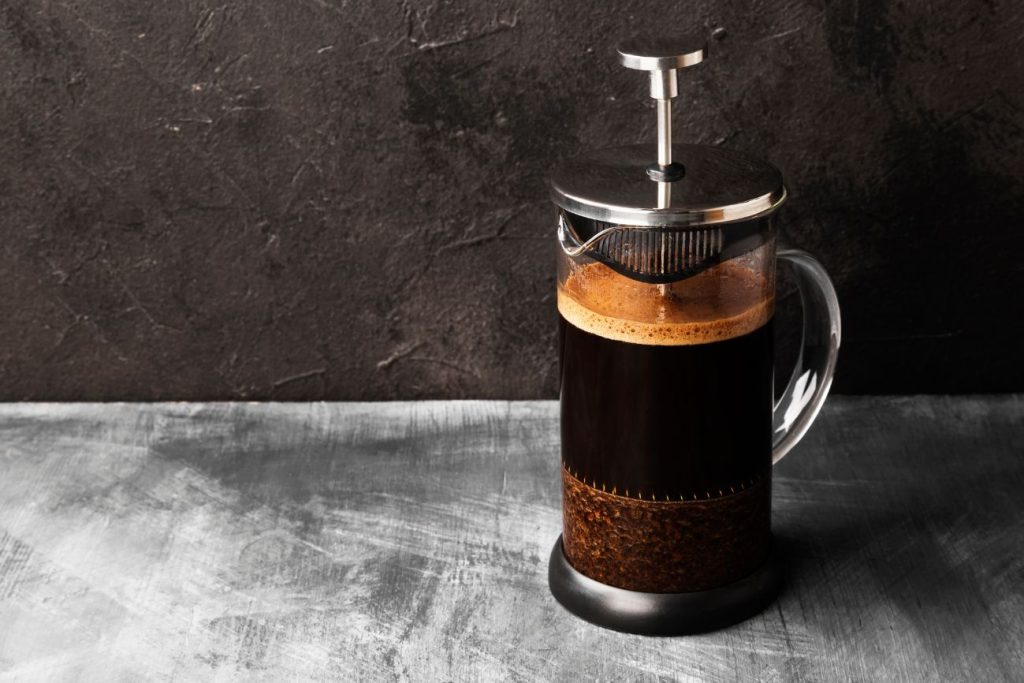
What Will You Need?
- A French press
- 3 tbsp of espresso grind coffee
- 2 cups of hot water
How to Make Espresso-Style Coffee with a French Press
- First, rinse your French press with hot water to preheat it and to maintain the coffee’s temperature.
- Add 3 tbsp of a little coarsely grounded coffee to a French press.
- Add water over coffee grounds and stir well to ensure that all the coffee grounds are evenly saturated.
- Put the lid on and let the coffee steep for about 4 minutes.
- Press the plunger down slowly and evenly.
- Now pour your coffee into your mug and enjoy.
Why Use a French Press?
While the French Press doesn’t use pressure like an espresso machine, the extended steeping time and full immersion method create a strong, concentrated brew. You can use less water to make it even more intense.
Pro Tips
- Use a coarser grind to avoid sediment in your cup.
- Adjust the coffee-to-water ratio to make a stronger concentrate.
- Serve immediately to prevent over-extraction.
French Press vs. AeroPress: Which Coffee Maker is Right for You?
4. Percolator: Old-School Espresso Alternative
The percolator is a classic brewing method that uses boiling water and steam to brew coffee. While it’s not as precise as modern methods, it can produce a strong, bold coffee that’s reminiscent of espresso. Check out the video below by Outdoors and Countiry Living to learn how to brew espresso without machine.
What You Will Need?
- A percolator
- Water
- Coffee
- Stove
How to Make Espresso-Style Coffee with a Percolator
- Add water to the percolator’s bottom chamber.
- Place the coffee basket in the percolator and add medium-coarse ground coffee.
- Assemble the percolator and place it on the stove over medium heat.
- As the water heats, it will cycle through the coffee grounds, extracting flavor.
- When the coffee reaches your desired strength, remove it from the heat.
Why Use This
The percolator’s continuous cycling of water through the coffee grounds creates a strong, robust brew. While it’s not as concentrated as espresso, it’s a great option for those who enjoy bold coffee.
Pro Tips
- Use medium-coarse ground coffee to avoid over-extraction.
- Monitor the brewing process closely to prevent bitterness.
- Clean the percolator thoroughly after each use.
5. Manual Hand-Pump Espresso Makers
There are two types of manual espresso makers: Flair Espresso Maker and Rok Espresso Maker. You can easily brew espresso without machine by doing all the steps manually. These coffee makers are the best alternatives for heavy espresso machines. These are designed to replicate the pressure and extraction process of traditional espresso machines. You control the brewing process and get a tasty cup of espresso using these manual espresso makers.
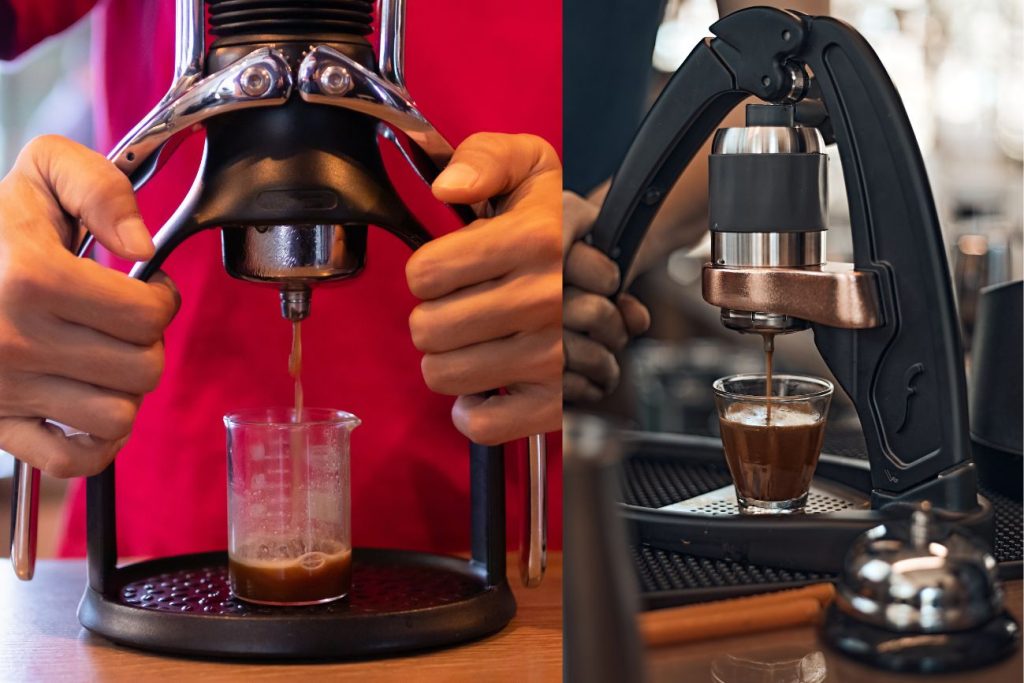
What You Will Need?
- A manual hand-pump espresso maker
- Slightly coarser ground coffee
- Hot water
How to Make Espresso-Style Coffee with a Manual Espresso Maker
- Disassemble the brew head and add 20 grams of slightly coarser grounded coffee into it.
- Now settle down the coffee grounds with the tamp to ensure a smooth and flat surface.
- Add the portafilter and seal the coffee.
- Now rinse your brew head with hot water to preheat it for temperature maintenance.
- Now place the brew head right back on top of the portafilter.
- Start pouring the hot water carefully into the top chamber.
- Start pressing the hand pump to generate pressure (around 9 bars) and extract the espresso into your cup.
- Serve and enjoy!
Why Use This
Manual espresso makers replicate the high-pressure extraction process of an espresso machine, producing a shot with crema and intense flavor.
Pro Tips
- Experiment with grind size and tamping pressure to fine-tune the flavor.
- Use freshly-ground coffee for the best results.
- Apply consistent pressure when extracting the shot.
6. The Vietnamese Phin: A Unique Slow Drip Method
A Vietnamese Phin is a small metal drip brewer traditionally used to make strong Vietnamese coffee. While it’s not an espresso maker, the slow drip process produces a concentrated, bold coffee that works well as an espresso alternative. This is very desirable for those who enjoy a strong coffee beverage.
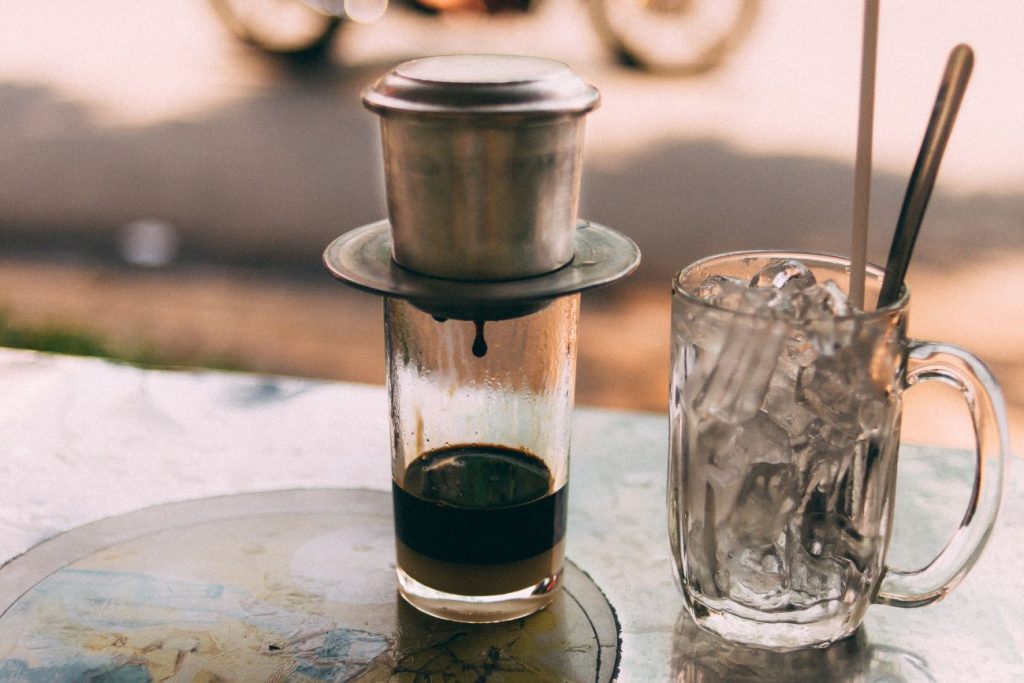
How to Make Espresso-Style Coffee with a Vietnamese Phin
- Place the Phin over a cup and add 2 tablespoons of finely ground coffee.
- Press the coffee down with the metal press.
- Pour a small amount of hot water over the coffee and let it bloom for 30 seconds.
- Fill the Phin with more hot water and allow it to drip slowly over 4-5 minutes.
- Enjoy the concentrated coffee shot, which can be used for iced coffee, lattes, or just as is.
- If you want to try the traditional Vietnamese coffee, served with sweetened condensed milk. Experiment with the amount to find your perfect sweetness.
Why Use a Vietnamese Phin?
- The phin is a simple, compact device, making it highly portable. You don’t need electricity or complex machinery.
- The slow-drip method of the phin extracts a strong, bold flavor, often using Robusta beans, which are known for their higher caffeine content and robust taste.
- Phins are generally inexpensive compared to espresso machines. They also eliminate the need for costly paper filters, contributing to sustainability.
Pro Tips
- Use high-quality Robusta or a Robusta/Arabica blend specifically roasted for phin brewing. Vietnamese coffee is traditionally dark roasted.
- A medium-coarse grind is ideal. Too fine, and it’ll clog; too coarse, and it’ll brew too quickly, resulting in a weak cup.
- Just like with pour-over, bloom your coffee. Pour a small amount of hot water (just enough to wet the grounds) and let it sit for 30 seconds. This allows the coffee to release trapped gases and enhances flavor.
Tips for Perfect Espresso Without Machine
Regardless of the method you choose, here are some tips to enhance your espresso-making experience:
- Use Freshly Ground Coffee: Always use freshly grounded coffee beans every time you brew coffee, because freshly grounded coffee beans have more flavor and aroma than pre-ground coffee beans.
- Choose the Right Grind: You will need a finely grounded coffee for making espresso using an espresso machine. But I suggest you use slightly coarser-ground coffee beans if you are making espresso without machine. Never use your regular or instant coffee to make the espresso shots.
- Measure Precisely: Always make sure to measure your coffee-to-water ratio for a perfect bold and rich flavor of espresso.
- Control Water Temperature: Always make sure that your water temperature is between 85°C and 96°C (185°F to 205°F). Water that’s too hot can burn the coffee, while water that’s too cool may result in under-extraction.
- Experiment: Don’t be afraid to tweak the brewing process to suit your taste preferences.
Can You Really Make Espresso Without Machine?
While these methods can produce strong, concentrated coffee, it’s important to note that they won’t replicate true espresso perfectly. Espresso machines use high pressure (9 bars or more) to extract coffee, which is hard to achieve with manual methods. However, the results from these techniques to brew espresso without machine are close enough to satisfy most coffee lovers, especially when used in espresso-based drinks like lattes or cappuccinos.
The End Line
As we know, espresso machines are so expensive that not everyone can afford them, so we’ve discussed the simplest ways to make espresso shots at home easily without spending a lot of money on them. You can make espresso with a Moka pot, french press, Aeropress, and other manual espresso makers, and you can still make a delicious cup of espresso without machine. The results and flavor of the espresso may differ slightly from the original, but you can obtain a rich, fully brewed cup of espresso that is comparable to the original with less effort and cost.
You can check out “5 Easy Brewing Methods for Perfect Coffee at Home“

